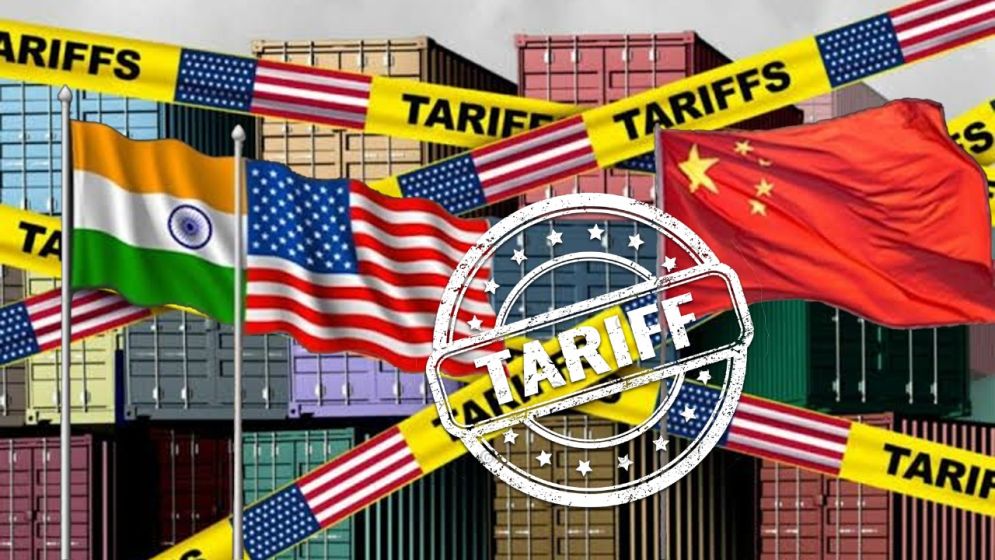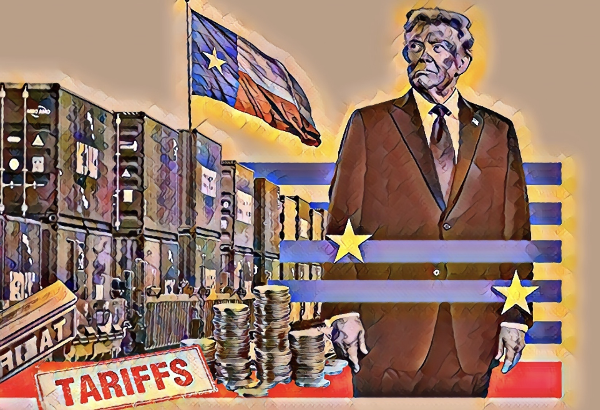In the ongoing tariff war with the US, India’s rebound diplomacy risks strategic whiplash

Looking back, the limited India-China disengagement in October 2024 now seems more than just a border management maneuver. It was a calculated cooling-off–not a solution, but a pause button–timed just before a volatile U.S. presidential election.
The border patrol agreement didn’t move the needle much militarily, but it dialed down the temperature on the Himalayan front just enough to avoid a crisis spilling into the headlines.
Fast forward to now, and Donald Trump–returned to power in Washington–has brought the India-US relationship crashing down from its lofty perch of strategic ambition to the chaotic marketplace of transactional politics.
After two decades of patient courtship between New Delhi and Washington, Trump’s bombast has reduced it to haggling in a bazaar. Perhaps, as some in South Block mutter privately, that’s where it belonged all along.
The backlash in India has come swiftly–but incoherently. Twitter timelines are aflame with patriotic indignation. But under that surface churn, the policy elite is already drifting toward familiar impulses.
Whispers of reviving the old Russia-India-China (RIC) trilateral are surfacing again. There’s talk of reopening channels with Beijing. Even the Indian foreign ministry has flirted with these ideas. But anyone who’s ever survived teenage heartbreak will tell you: rebound relationships rarely end well.
India has spent over a decade–deliberately, and at considerable cost–pivoting westward.
From trade to technology to geopolitics, the direction has been clear. Press Note 3 tightened the screws on Chinese investment. Indian Commerce minister Piyush Goyal openly dismissed ASEAN as a proxy for Chinese economic interests.
India exited RCEP at the eleventh hour, citing unfair terms. It recast its 5G roadmap without Huawei or ZTE. Today, it’s weeding out Chinese surveillance infrastructure from sensitive sites. The message was unambiguous: Delhi had made its choice.
Initiatives like the Quad, I2U2, and IMEC all reinforce that trajectory. They chart a path westward–toward markets, innovation, and influence. None of these frameworks even gestures east.
India has sought trade deals with the EU, the UK, and the UAE. With ASEAN and East Asia, it’s either renegotiating or retreating. That strategy may have been imperfect, but it was consistent.

The peril of Trumpian diplomacy
Now, with Trump laying bare the fragility of the India-US romance, the temptation in Delhi is to pivot back east–to rekindle old ties with China and Russia under the pretext of “strategic autonomy.”
But let’s call that what it is: strategic opportunism, not non-alignment. And opportunism rarely commands respect–least of all from Beijing.
In Bangladesh, and across South Asia, we’ve watched India’s westward turn with interest. It wasn’t just about countering China. It suggested a new kind of regional leadership, one rooted in democratic convergence and economic modernization.
If India reverses course now–not out of principle but out of pique–it will not only lose credibility but also expose itself to the very vulnerabilities it spent years trying to shed.
To be clear, course correction is necessary. Indian policymakers are right to acknowledge that some level of economic recalibration is inevitable, especially in a post-pandemic, Trump-led world order.
But recalibration is not the same as capitulation. Opening up to the east cannot come from a place of emotional retaliation. That cannot be called a strategy; that’s flailing.
And India is not a teenager anymore. It cannot afford to treat its foreign policy like a romantic drama.
The romance of “strategic autonomy” sounds noble. In theory, it allows India to chart an independent course–not subservient to any camp, not beholden to any capital. In practice, though, autonomy without leverage is just another word for drift.
Unless India builds power beyond the size of its domestic market, it risks one of two fates: being pummelled from both sides, or being dragged along in someone else’s shadow.
The brutal truth is this: the other players on the board have agency–and they’re using it.
Russia, once a dependable defence partner, has reduced itself to a junior accomplice in China’s orbit. Its invasion of Ukraine sealed that fate.
India has, for over a decade, been quietly decoupling from Moscow on key military dependencies. That process will now accelerate. But there should be no illusions: whatever residual “strategic partnership” remains is mostly nostalgia.
China, on the other hand, believes in India’s “strategic autonomy” as little as Washington does– perhaps less. Beijing has made its view clear: India has pivoted to the West, and must be punished accordingly.
Whether it’s blocking India’s NSG membership, stonewalling at the UN, or tightening its grip on Pakistan, China has calibrated a long-term containment strategy aimed directly at India’s rise.

Roadblocks in eastward direction
This was on full display during Operation Sindoor, when China’s defence and intelligence alliance with Pakistan crossed a new threshold. But the confrontation isn’t just military–it’s economic.
India wants to be the next great manufacturing hub. China has no intention of letting that happen on its watch.
From tunnel-boring equipment for India’s infrastructure projects to precision fertilisers and skilled industrial inputs, Chinese exporters have been deliberately slow-walking or halting shipments.
India’s ambition to become a major exporter of electric vehicles and smartphones is being undercut by the quiet throttling of components–rare earth magnets, chip-making tools, specialised machinery.
The message is unsubtle: you will not become a global value chain leader at our expense.
Private sector players in India’s growth sectors already see the pattern. They know that Chinese economic pressure is targeted and strategic–aimed precisely at industries that could give India a competitive edge.
As US tariffs rise and China tightens its grip, investors are spooked. The cost of doing business in India rises. Certainty fades. And with it, the confidence required for long-term bets on India’s export potential.
Because let’s be honest: exports are China’s lifeline. It will not surrender its dominance quietly. So where does that leave India?
Not in limbo. Not on the rebound. But looking West–deliberately, pragmatically, urgently.
Free trade agreements with the European Union and the Gulf Cooperation Council (GCC) must move beyond endless bureaucratic rehearsals. Indian negotiators are infamous for drawing out talks until everyone forgets why they started.
That luxury no longer exists. A deal with the EU by year-end is not a wishlist item–it’s a strategic necessity. GCC ties are equally vital. Both blocs offer markets, capital, and geopolitical ballast.
More broadly, India must shed its protectionist impulse. It cannot insulate its private sector behind tariff walls and still claim to be an export power. Trump’s tantrums have done India one unintended favour–they’ve exposed the calcified state of India’s trade architecture.
New Delhi should use this breather not to lash out or flail, but to fix what’s broken. Streamline negotiations. Open markets. Unclog bureaucracy. Empower the private sector to operate in a world of ruthless competition, not nostalgic slogans.
And finally, let’s not forget: China has kept India off balance for decades. It’s time India learns to return the favour–not through rhetorical chest-thumping, but with strategy, alliances, and economic precision.
Keeping Pakistan off-kilter is not a regional indulgence. It is geopolitical common sense.
New Delhi probably should revisit that thought that strategic autonomy is not a posture. It’s a product–of leverage, foresight, and action. Right now, India has none to waste.
—-
Md Sazzad Amin is Bangla Outlook’s Chief Geopolitical Columnist

